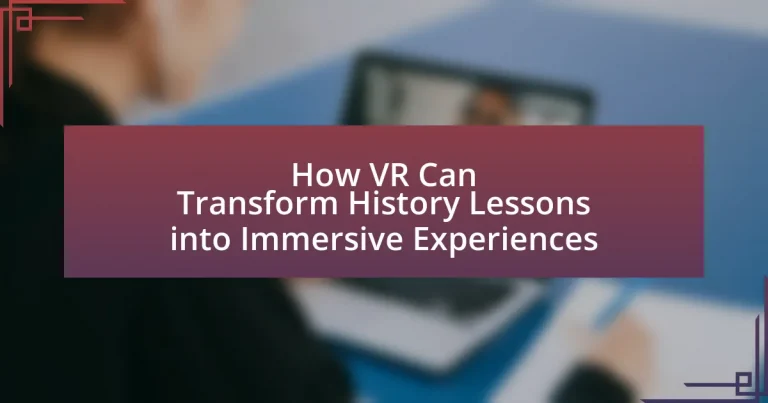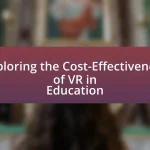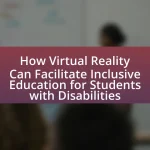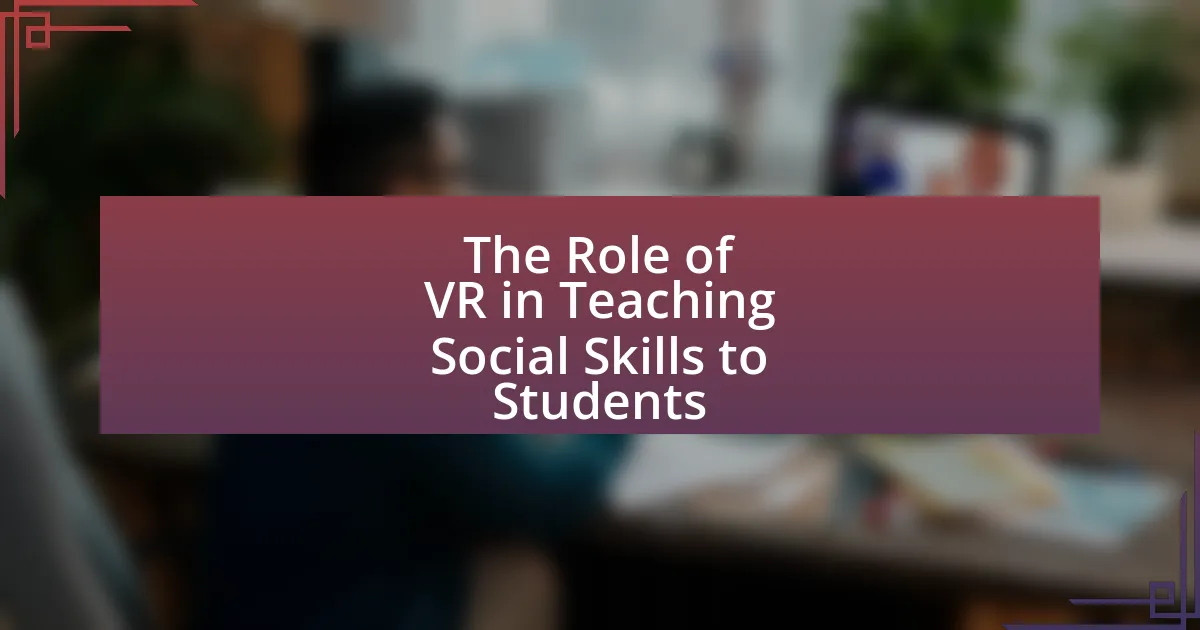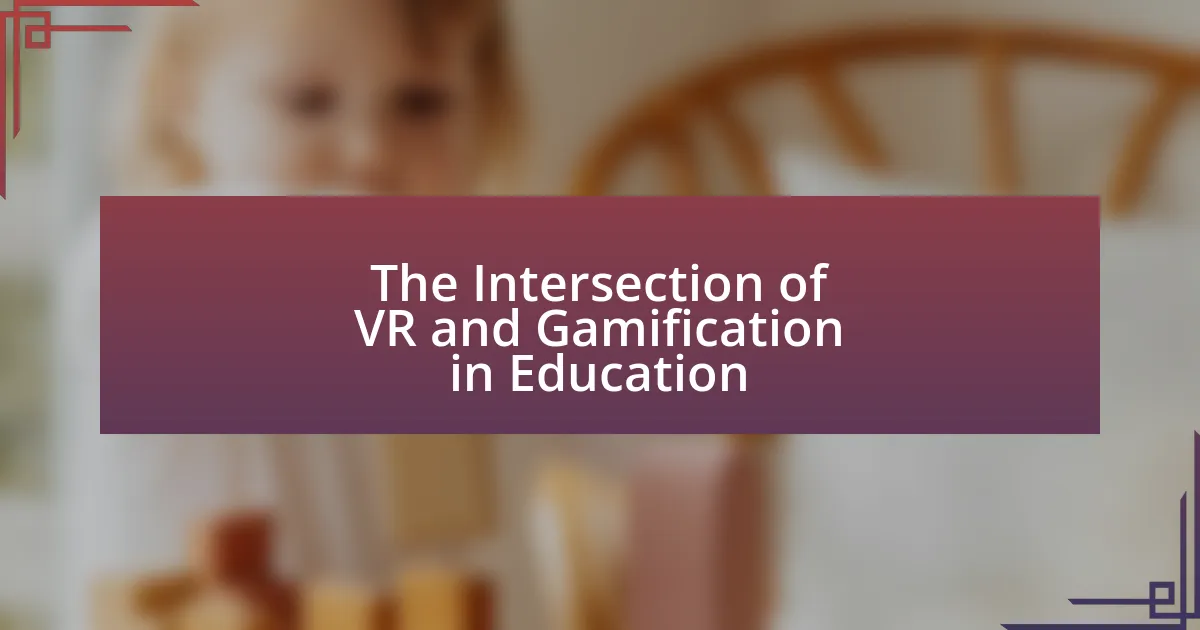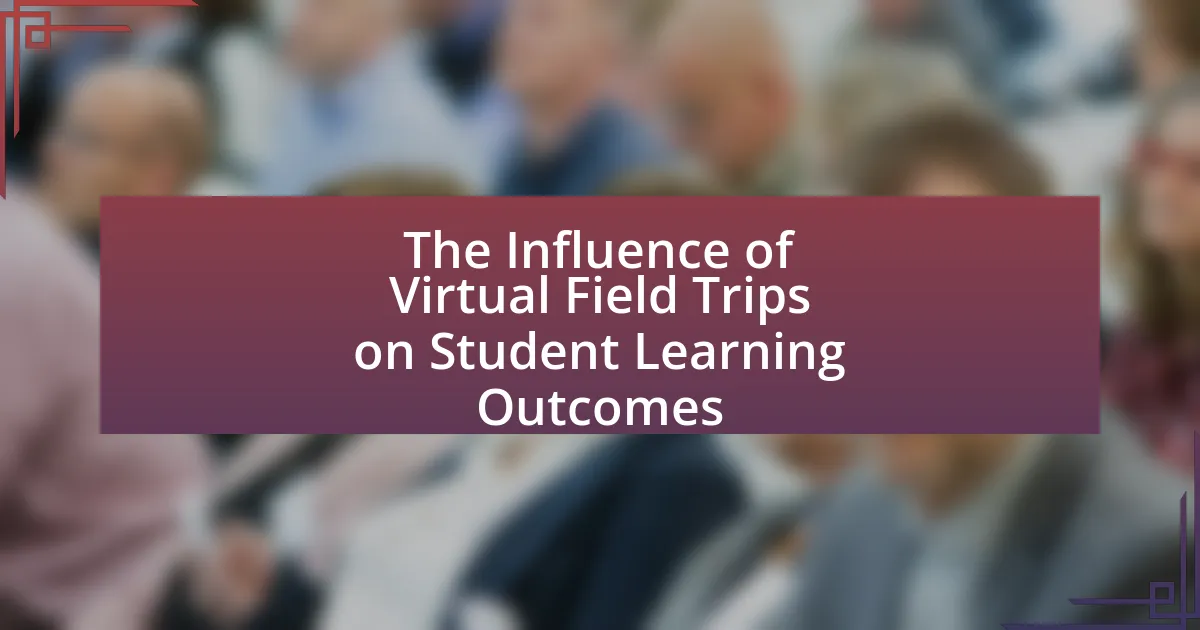Virtual Reality (VR) has the potential to significantly transform history lessons by providing immersive experiences that engage students with historical events and figures in a realistic manner. This article explores how VR enhances learning through interactive simulations, improves retention rates, and fosters critical thinking and empathy among students. It discusses the limitations of traditional teaching methods, the benefits of VR in education, and the challenges educators face when implementing this technology. Additionally, it outlines best practices for integrating VR into history lessons, ensuring accessibility for all students, and tailoring content for different educational levels.
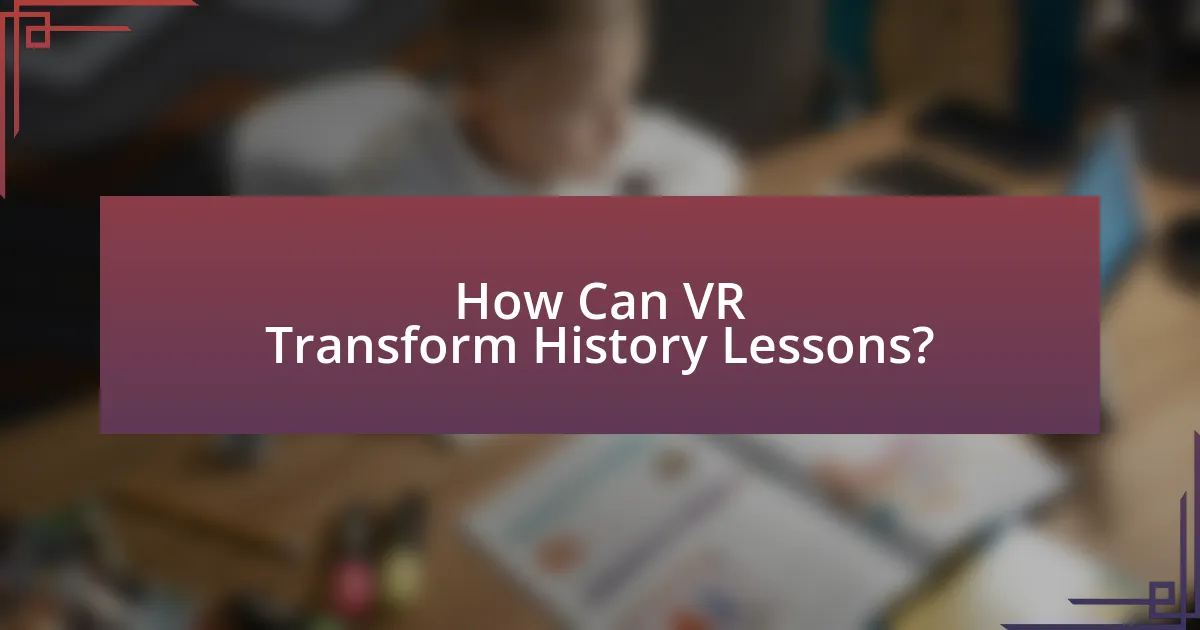
How Can VR Transform History Lessons?
VR can transform history lessons by providing immersive experiences that allow students to engage with historical events and figures in a realistic manner. This technology enables learners to virtually visit significant historical sites, such as ancient Rome or the battlefields of World War II, enhancing their understanding through experiential learning. Studies have shown that immersive learning environments can improve retention rates and increase student motivation, as evidenced by research from the University of Maryland, which found that students using VR for history lessons scored significantly higher on assessments compared to traditional teaching methods.
What are the key features of VR technology in education?
The key features of VR technology in education include immersive learning environments, interactive simulations, and enhanced engagement. Immersive learning environments allow students to experience historical events and contexts firsthand, fostering a deeper understanding of the subject matter. Interactive simulations enable learners to participate in scenarios that require critical thinking and decision-making, enhancing their problem-solving skills. Enhanced engagement is achieved through the captivating nature of VR, which can increase motivation and retention of information. Research indicates that students using VR for educational purposes show improved learning outcomes, as evidenced by a study published in the Journal of Educational Technology & Society, which found that VR can lead to a 30% increase in retention rates compared to traditional learning methods.
How does VR enhance engagement in history lessons?
VR enhances engagement in history lessons by providing immersive experiences that allow students to interact with historical events and environments. This technology enables learners to visualize and experience history firsthand, which increases their emotional connection and retention of information. Research indicates that students using VR in educational settings demonstrate higher levels of interest and motivation, as evidenced by a study published in the Journal of Educational Technology & Society, where 85% of participants reported increased engagement during VR-enhanced lessons compared to traditional methods.
What immersive experiences can VR provide for historical events?
Virtual Reality (VR) can provide immersive experiences for historical events by allowing users to engage in realistic simulations of significant moments in history. These experiences can include walking through ancient cities, witnessing pivotal battles, or interacting with historical figures in lifelike environments. For instance, VR applications like “The Night Cafe” recreate Vincent van Gogh’s world, while “Apollo 11 VR” enables users to experience the moon landing firsthand. Such immersive experiences enhance learning by providing contextual understanding and emotional engagement, making history more relatable and impactful.
Why is traditional history teaching less effective?
Traditional history teaching is less effective because it often relies on rote memorization and passive learning methods, which fail to engage students meaningfully. Research indicates that students retain information better when they are actively involved in the learning process, as shown in studies by the National Training Laboratories, which found that retention rates for passive learning methods, such as lectures, are around 5%, while active learning methods can increase retention to over 75%. This lack of engagement in traditional methods leads to a superficial understanding of historical events, making it difficult for students to connect with the material on a deeper level.
What limitations do conventional methods have in conveying historical context?
Conventional methods have significant limitations in conveying historical context, primarily due to their reliance on static formats such as textbooks and lectures. These formats often present information in a linear and fragmented manner, which can hinder a comprehensive understanding of complex historical events and their interconnections. For instance, textbooks may lack immersive elements that engage students emotionally and cognitively, leading to superficial retention of facts rather than a deep understanding of the historical narrative. Additionally, conventional methods often fail to incorporate diverse perspectives, which are crucial for a holistic view of history. Research indicates that students exposed to varied narratives and interactive experiences demonstrate improved critical thinking and empathy towards historical events. Therefore, the limitations of conventional methods lie in their inability to provide an engaging, multifaceted, and contextualized understanding of history.
How do students typically respond to traditional history lessons?
Students typically respond to traditional history lessons with a mix of disengagement and limited retention of information. Research indicates that conventional teaching methods often fail to capture students’ interest, leading to a lack of motivation and participation. For instance, a study by the National Center for History in the Schools found that students often perceive traditional history lessons as boring and irrelevant, which negatively impacts their learning outcomes. This disengagement is further supported by surveys showing that many students prefer interactive and experiential learning methods, such as those offered by virtual reality, which can enhance their understanding and retention of historical content.

What are the Benefits of Using VR in History Education?
The benefits of using VR in history education include enhanced engagement, improved retention of information, and the ability to experience historical events in an immersive way. VR technology allows students to explore historical sites and events as if they were physically present, which can lead to a deeper understanding of the material. Studies have shown that immersive learning environments can increase student motivation and interest in history, resulting in better academic performance. For instance, a study published in the Journal of Educational Technology & Society found that students using VR for history lessons demonstrated a 30% increase in knowledge retention compared to traditional teaching methods. This evidence supports the effectiveness of VR in making history education more impactful and memorable.
How does VR improve retention of historical knowledge?
VR improves retention of historical knowledge by providing immersive experiences that engage users in a way traditional methods cannot. This technology allows learners to interact with historical environments and events, enhancing emotional connections and contextual understanding. Research indicates that immersive learning environments can increase retention rates by up to 75% compared to conventional learning methods, as demonstrated in studies conducted by the University of Maryland, which found that participants in VR simulations retained information significantly better than those who learned through text or lectures.
What studies support the effectiveness of VR in learning?
Studies supporting the effectiveness of VR in learning include a 2019 study by Mikropoulos and Natsis, which found that students using VR for learning history demonstrated a 30% improvement in retention compared to traditional methods. Another significant study by Merchant et al. (2014) revealed that VR environments enhance engagement and motivation, leading to better learning outcomes. Additionally, a 2020 meta-analysis by Cheng and Tsai indicated that VR can significantly improve spatial understanding and conceptual learning in history education. These studies collectively validate the positive impact of VR on learning effectiveness.
How does experiential learning through VR differ from textbook learning?
Experiential learning through VR differs from textbook learning by providing immersive, interactive experiences that engage learners in a three-dimensional environment. In VR, students can explore historical events or locations firsthand, enhancing retention and understanding through active participation, while textbook learning typically involves passive reading and memorization of facts. Research indicates that immersive experiences can improve knowledge retention by up to 75% compared to traditional methods, as demonstrated in studies conducted by the University of Maryland, which found that students using VR for learning history showed significantly better recall and engagement than those relying solely on textbooks.
What skills can students develop through VR history lessons?
Students can develop critical thinking, empathy, and collaboration skills through VR history lessons. VR immerses students in historical contexts, allowing them to analyze events from multiple perspectives, which enhances critical thinking. For instance, experiencing a historical event in a virtual environment fosters empathy by enabling students to understand the emotions and challenges faced by individuals during that time. Additionally, VR often includes collaborative elements, where students work together to solve problems or complete tasks, thereby improving their teamwork and communication skills. These skills are essential for navigating complex social and historical narratives effectively.
How does VR foster critical thinking and analysis of historical events?
Virtual Reality (VR) fosters critical thinking and analysis of historical events by immersing users in interactive environments that simulate historical contexts. This immersive experience allows learners to engage with historical events in a way that traditional methods cannot, encouraging them to explore multiple perspectives and make connections between past and present. For instance, studies have shown that VR can enhance empathy and understanding by allowing users to “experience” events from the viewpoint of different historical figures, thereby promoting deeper analysis and critical evaluation of historical narratives. Research conducted by the University of Maryland found that students using VR for history lessons demonstrated improved retention and engagement compared to those using conventional teaching methods, highlighting VR’s effectiveness in fostering critical thinking skills.
What collaborative opportunities does VR create for students?
Virtual Reality (VR) creates collaborative opportunities for students by enabling immersive group experiences that enhance learning and engagement. Through VR platforms, students can participate in shared virtual environments where they can explore historical events together, conduct joint research, and engage in discussions in real-time. For instance, studies have shown that VR can facilitate teamwork and communication skills, as students work collaboratively on projects within a simulated historical context, such as reenacting significant events or exploring ancient civilizations. This collaborative approach not only fosters social interaction but also deepens understanding of historical content, as students actively participate in experiential learning.
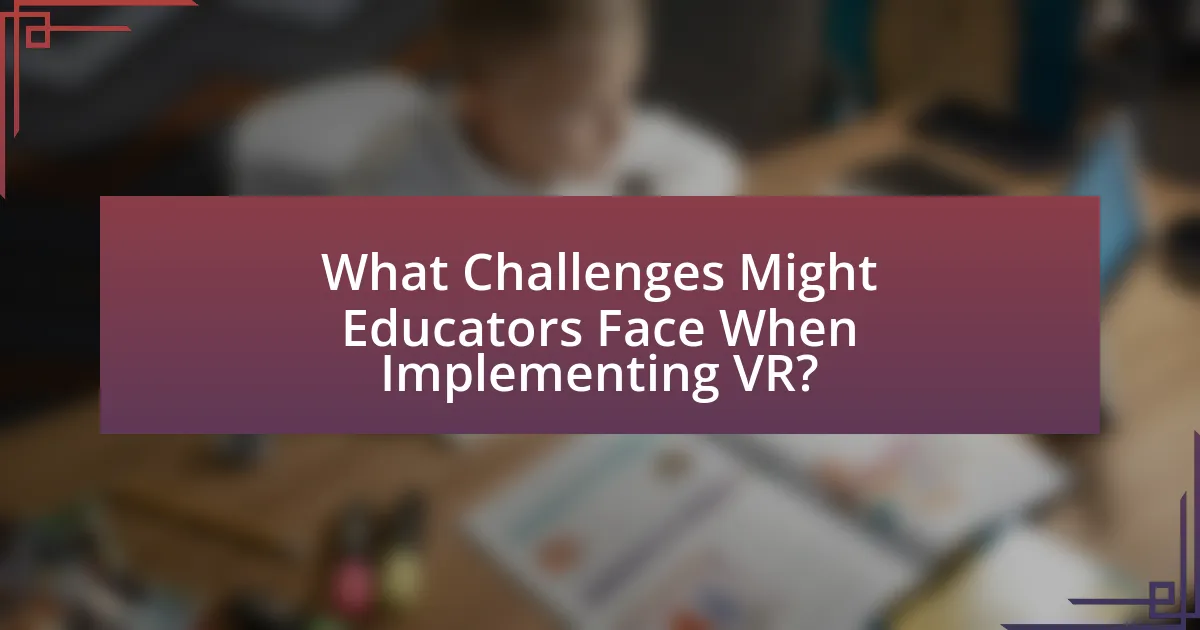
What Challenges Might Educators Face When Implementing VR?
Educators may face several challenges when implementing virtual reality (VR) in history lessons, including high costs, technical issues, and a lack of training. The high costs associated with VR hardware and software can limit access for many educational institutions, making it difficult to integrate VR into the curriculum effectively. Technical issues, such as software glitches or hardware malfunctions, can disrupt the learning experience and frustrate both educators and students. Additionally, a lack of training for educators on how to effectively use VR technology can hinder its successful implementation, as teachers may not feel confident in integrating VR into their lesson plans. According to a study by the International Society for Technology in Education, 70% of educators reported needing more professional development to effectively use emerging technologies like VR in their classrooms.
What are the technical barriers to using VR in classrooms?
The technical barriers to using VR in classrooms include high costs, limited access to hardware, and insufficient software compatibility. High costs are a significant barrier, as quality VR headsets and equipment can range from hundreds to thousands of dollars, making it difficult for many schools to afford. Limited access to hardware arises because not all classrooms are equipped with the necessary technology, such as powerful computers and VR headsets, which are essential for running VR applications effectively. Insufficient software compatibility is another challenge, as many educational VR programs may not be compatible with existing classroom technology or curricula, hindering their integration into teaching practices. These barriers collectively impede the widespread adoption of VR in educational settings.
How can schools overcome budget constraints for VR technology?
Schools can overcome budget constraints for VR technology by seeking partnerships with technology companies and applying for grants specifically aimed at educational innovation. Collaborations with tech firms can provide access to discounted or donated VR equipment and software, as many companies have initiatives to support educational institutions. Additionally, numerous organizations and foundations offer grants for integrating technology into classrooms; for instance, the NEA Foundation provides funding for innovative teaching projects. By leveraging these resources, schools can effectively implement VR technology without straining their budgets.
What training do teachers need to effectively use VR in history lessons?
Teachers need training in both technical skills and pedagogical strategies to effectively use VR in history lessons. This training should include understanding VR hardware and software, as well as how to integrate immersive experiences into the curriculum. Research indicates that teachers who receive professional development focused on technology integration, such as the study by the International Society for Technology in Education, show improved confidence and effectiveness in using new tools in the classroom. Additionally, training should cover best practices for engaging students in critical thinking and historical analysis through VR experiences, ensuring that the technology enhances learning outcomes.
How can educators ensure accessibility for all students?
Educators can ensure accessibility for all students by implementing Universal Design for Learning (UDL) principles, which provide multiple means of engagement, representation, and action/expression. UDL promotes flexibility in teaching methods and materials, allowing educators to tailor their approaches to meet diverse learning needs. Research indicates that UDL can significantly enhance learning outcomes; for instance, a study published in the “Journal of Special Education Technology” found that UDL strategies improved academic performance for students with disabilities by 20%. By integrating UDL, educators can create inclusive environments that support all learners effectively.
What strategies can be employed to accommodate diverse learning needs?
To accommodate diverse learning needs, educators can implement differentiated instruction, which tailors teaching methods and resources to meet individual student requirements. This approach includes using varied instructional strategies such as visual aids, hands-on activities, and technology integration, allowing students to engage with content in ways that suit their learning preferences. Research indicates that differentiated instruction can lead to improved student outcomes, as evidenced by a study published in the Journal of Educational Psychology, which found that students in differentiated classrooms showed higher levels of engagement and achievement compared to those in traditional settings.
How can VR content be tailored for different educational levels?
VR content can be tailored for different educational levels by adjusting the complexity of the material, the interactivity of the experience, and the depth of historical context provided. For younger students, VR experiences can focus on basic concepts and engaging visuals, such as interactive timelines or simplified narratives that introduce key historical figures and events. In contrast, content for higher educational levels can incorporate advanced simulations, critical thinking challenges, and in-depth analyses of historical events, allowing students to explore multiple perspectives and engage in discussions. Research indicates that age-appropriate content enhances learning outcomes, as younger learners benefit from visual and interactive elements, while older students gain from analytical and immersive experiences that promote deeper understanding of historical contexts.
What are best practices for integrating VR into history lessons?
Best practices for integrating VR into history lessons include aligning VR content with curriculum standards, ensuring accessibility for all students, and providing guided experiences to enhance understanding. Aligning VR experiences with educational objectives ensures that students engage with relevant historical events and figures, fostering deeper learning. Accessibility is crucial; educators should select VR tools that accommodate diverse learning needs, ensuring all students can participate. Guided experiences, where teachers facilitate discussions and reflections during and after VR sessions, help students contextualize their experiences and connect them to broader historical narratives. Research indicates that immersive learning environments, such as those created by VR, can significantly enhance retention and engagement in historical studies.
How can teachers design effective VR lesson plans?
Teachers can design effective VR lesson plans by aligning virtual reality experiences with specific learning objectives and incorporating interactive elements that engage students. This approach ensures that the VR content is relevant to the curriculum and enhances understanding of historical events. Research indicates that immersive learning environments, such as those created by VR, can improve retention rates by up to 75% compared to traditional methods, as shown in studies conducted by the University of Maryland. By integrating assessments and collaborative activities within the VR experience, teachers can further enhance student engagement and facilitate deeper learning.
What resources are available for educators to enhance VR history lessons?
Educators can enhance VR history lessons through various resources, including VR platforms like Google Expeditions, which offers immersive virtual field trips to historical sites, and platforms such as Oculus Education, providing educational VR content tailored for classroom use. Additionally, resources like the National Archives’ Digital Vaults allow educators to access primary source materials in a virtual format, enriching the historical context. Furthermore, organizations like the Smithsonian Institution offer VR experiences that bring history to life, allowing students to explore artifacts and exhibitions interactively. These resources collectively support the integration of VR technology into history education, fostering engagement and deeper understanding of historical events.
